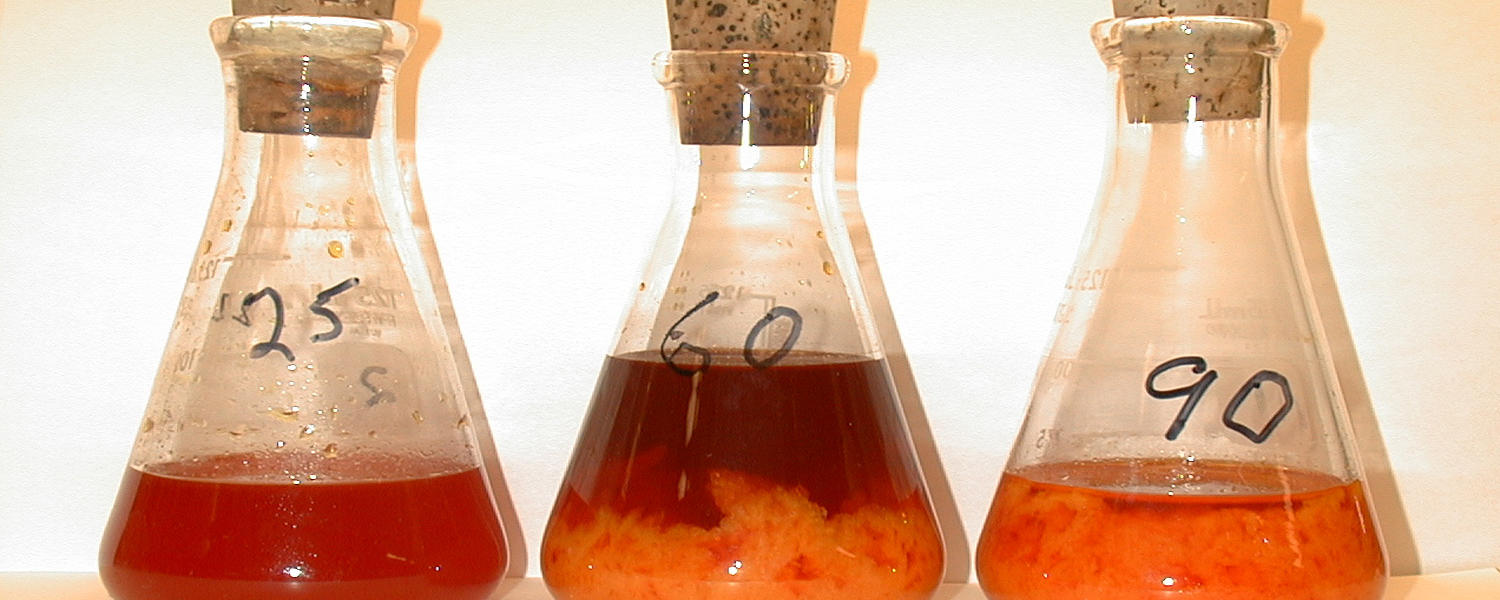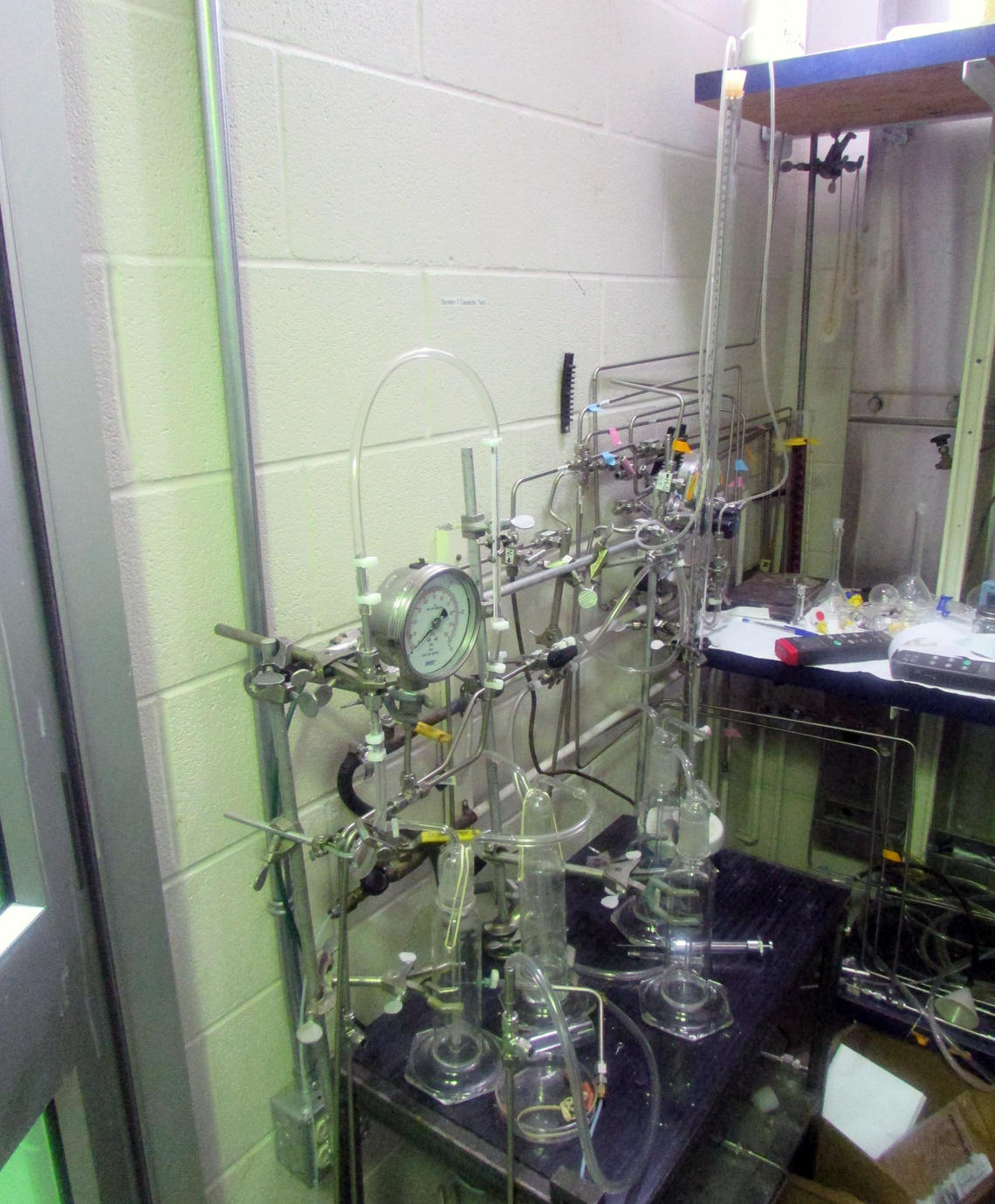
Sulfur Solvents and Hydrogen Sulfide Scavengers Testing

Sulfur Solvent Uptake Apparatus
Sulfur Solvent Uptake Studies
Our sulfur uptake apparatus is the first step in determining the sulfur solubility of a particular solvent under a specified set of conditions which include: solvent composition, temperature (-30 to 140 oC), exposure to different gases such as N2, CH4, H2S, CO2, etc., and sulfur saturation. The temperature is monitored via an internal thermocouple and heated gases can be bubbled through the solvent using a submerged frit. Sub-samples of solvent can be extracted through a dip tube or syringe. The apparatus is also equipped with a condenser and collection flask in order to study solvent regeneration at higher temperatures. This apparatus operates at atmospheric pressure; high pressure sulfur uptake work can be performed but it requires a metal autoclave system.

Scavenger Uptake Apparatus
Scavenger Uptake Studies
Scavenger uptake studies involve flowing/bubbling a gas mixture, typically H2S and CO2 or N2 through a scavenger formulation in order to determine the H2S or CO2 capacity and uptake rates. The scavenger, inlet and outlet gases can be sampled over the course of an experiment in order to determine changes in composition. A number of different test conditions can be adjusted; these include: reaction temperature, pre-saturation of gas with water and gas composition.

